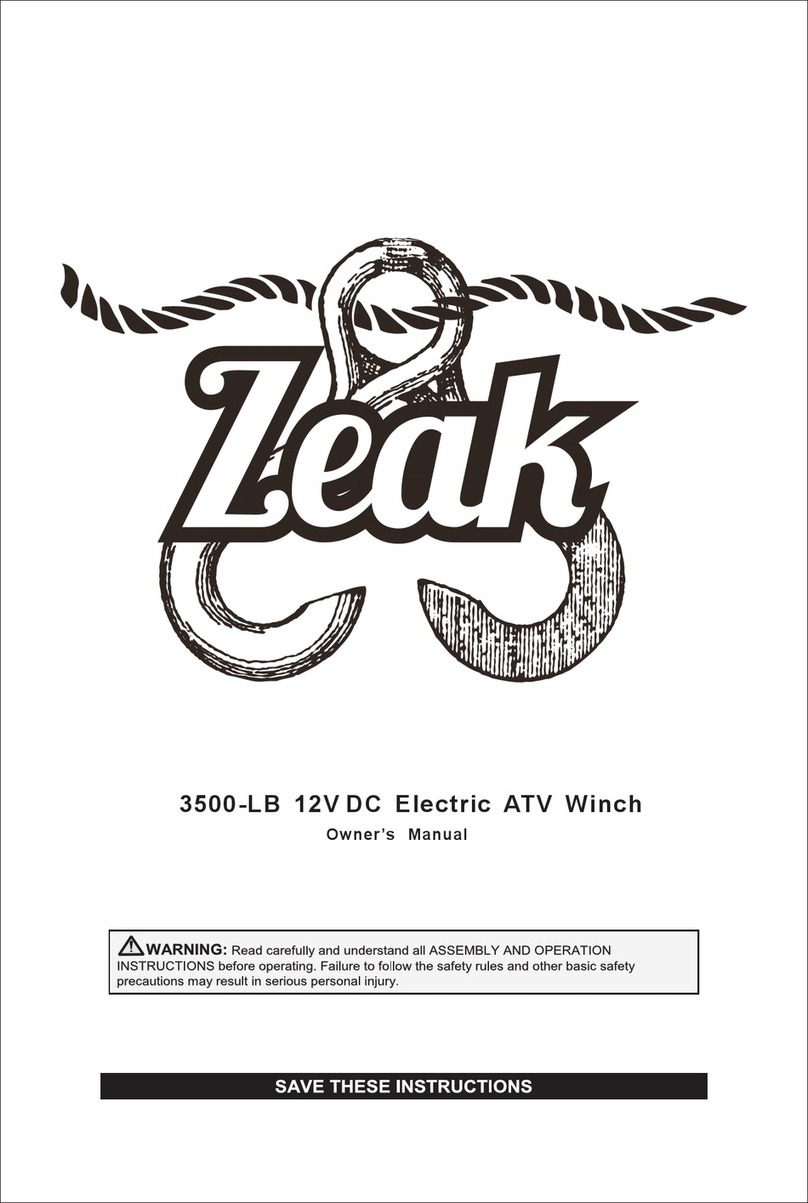
9.Stay out of the direct line that the wire rope is pulling. If it slips or breaks, it
will create a whiplash effect. Utilize a winch dampener to help absorb the force
released if the wire rope breaks.
10.Do not use for overhead hoisting. This winch is intended to be used for
pulling only.
11.Use a spotter to assist you in ensuring that it is safe to operate the winch.
Make sure the spotter is out of the way of the vehicle and the wire rope before
activating the winch.
13.Do not use vehicle to pull on the wire rope and “assist” the winch.
14.Do not use to transport people or animals.
15.Disconnect battery cables before working near the wire rope, drum, fairlead
or load, to prevent accidental starting.
16.Keep wire rope straight to avoid kinking the wire rope.
17.Keep children and bystanders away while operating.
18.Hook onto the object using a pulling point, tow strap or chain. Do not wrap
the wire rope around the object and hook onto the wire rope itself.
19.Do not use a recovery strap while winching.
20.Secure the load after moving. Do not lock the mechanism.
21.Keep at least 5 full turns of wire rope on the drum.
22.Keep clear of the wire rope, hook, and load while winching. Do not step over
the wire rope. Do not push sideways against the wire rope under tension; wire
rope might break under this load and recoil back, striking the person pushing
against it or a bystander.
23.If the wire rope begins to get entangled, stop the winch immediately and
release the wire rope using the switch.
24.Only winch with the winching vehicle’s transmission placed in neutral.
Winching with a vehicle’s transmission in gear or park may damage the transmis-
sion. A vehicle’s transmission is not designed to handle this type of load.
25.Do not operate the winch on extreme slopes. Do not exceed the angles for a
roller fairlead. For a hawse fairlead, the angle should be as close to 180 degrees
as possible.
26.People with pacemakers should consult their physicians before use. Elec-
tromagnetic fields in close proximity to heart pacemaker could cause pacemaker
interference or pacemaker failure.
27.Remove any element or obstacle that may interfere with safe operation of
the winch.
28.Always use supplied hook strap whenever spooling winch rope in or out,
during installation and during operation.
29.Always take time to use appropriate rigging techniques for winch pull.
12.Do not use the hand crank, if equipped, to assist the winch.
4





























